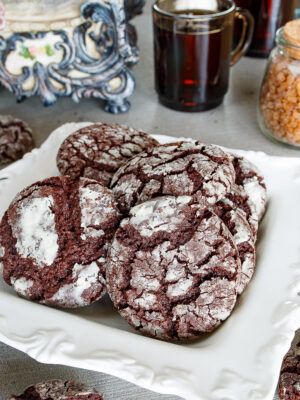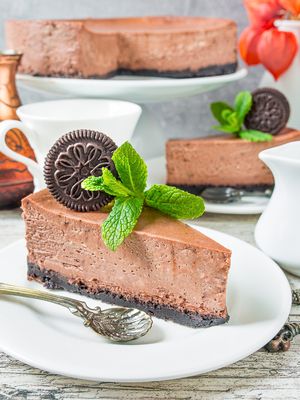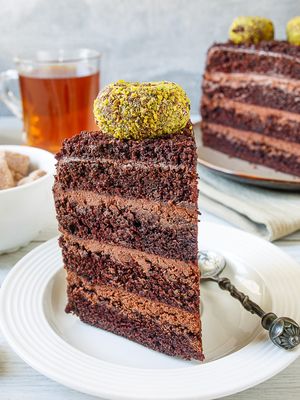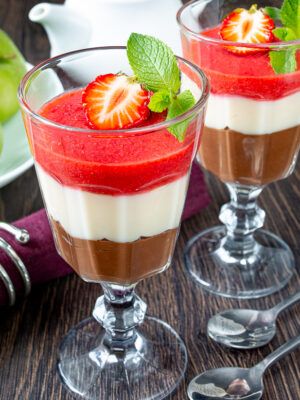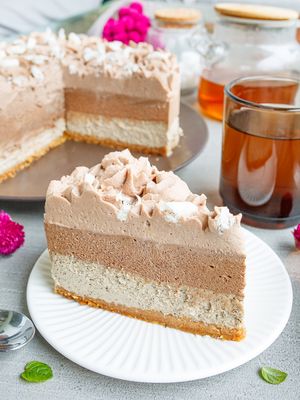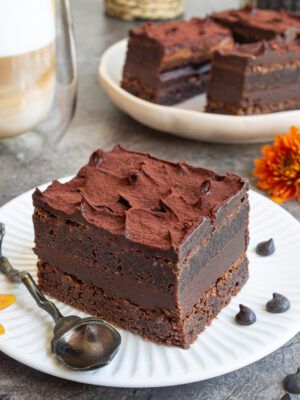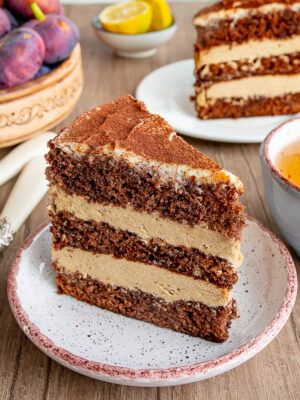
Ingredients for 21 cm baking pan:
Batter
- 5 pcs
- 150 g
- 10 g
- 110 g
- 30 g
- 30 g
- 1 tsp
- 100 ml
Frosting
- 400 ml
- 2 tbsp
- 200 g
- 3 pcs
- 30 g
- 10 g
- 120 g
- 200 g
Syrup
- water150 ml
- 150 ml
For Dusting
- 15 g
Recipe:
Ingredient Notes:
- Coffee. I recommend using natural ground coffee as it provides the most authentic and robust flavor for the cake and the syrup. If you choose to substitute with instant coffee, use 1 teaspoon.
- Chocolate. This recipe calls for white chocolate in the pastry cream. It provides a light, delicate sweetness that subtly complements the coffee flavor. Milk chocolate would be richer (and potentially overwhelming, in my opinion), but if you prefer a more intense chocolate flavor, you may substitute the white chocolate with milk chocolate.
- Cocoa Powder. I use Dutch-processed (alkalized) cocoa powder for the deepest, most saturated color in the sponge layers. Regular, non-alkalized cocoa powder is acceptable but will result in a noticeably lighter-colored cake. Do not use instant cocoa mixes (like Nesquik), as they contain too much sugar and stabilizers.
- Flour. Use standard all-purpose flour with a protein content of around 10.5g per 100g. You may substitute it with a slightly lower grade flour (like ‘first grade’ flour) without needing to make any other adjustments to the recipe.
- Eggs. Use medium-sized eggs, weighing around 55g without shell. For better blending and texture in the batter, ensure the eggs are at room temperature.
- Butter. For the best texture and flavor, use butter with a fat content of 80% or higher.
- Milk. For both the cake batter and the pastry cream, use standard fat milk (2–4% fat). If you desire a richer, creamier taste in your frosting, you can replace half of the milk volume with heavy cream.
- Starch. The recipe uses cornstarch for the frosting, as it sets softer and does not impart any foreign taste. If you must substitute cornstarch with potato starch, remember that potato starch is a much stronger thickener: use half the amount of potato starch.
- Sugar. Regular white granulated sugar is suitable for both the batter and the cream. Fine grain sugar is always preferred, as it dissolves faster and more thoroughly.
- Almond Flour. You can use ready-made almond flour or grind unroasted almonds yourself in a coffee grinder. Hazelnut flour is also an excellent alternative if preferred.
- Gelatin. I use sheet gelatin for this recipe. You don’t need to measure the water for soaking – the sheets will absorb exactly what they need, and you can simply drain the rest. If you’re using powdered or granulated gelatin, the ratio is 1 part gelatin to 6 parts water (for example, 10g of gelatin needs 60g of cold water).
Let’s start cooking!
Prepare the sponge.
Combine eggs and sugar, then beat the mixture until it becomes light and triples in volume. While whisking continuously, gradually add the cornstarch.
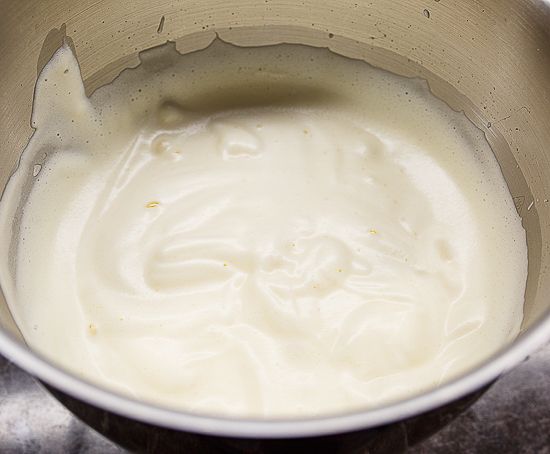
Sift dry ingredients together.
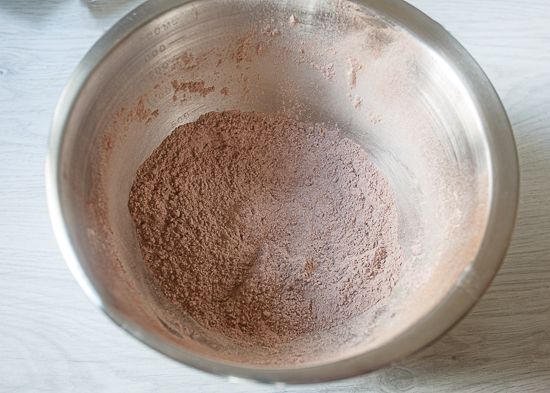
Gently mix the batter with a whisk, alternately adding the dry mixture and milk. Try to keep as much air in the mixture as possible.
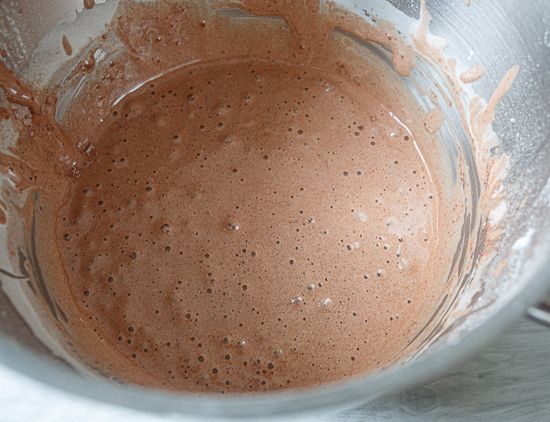
Transfer the batter to a baking pan and bake in an oven preheated to 180°C (350°F). Bake for 30-35 minutes or until a toothpick inserted in the center comes out clean.
Let the finished sponge cool in the pan for half an hour, then remove it and let it cool completely. For easier slicing, wrap the sponge in plastic wrap and refrigerate for a couple of hours or overnight.
Slice the cake into 3 layers.
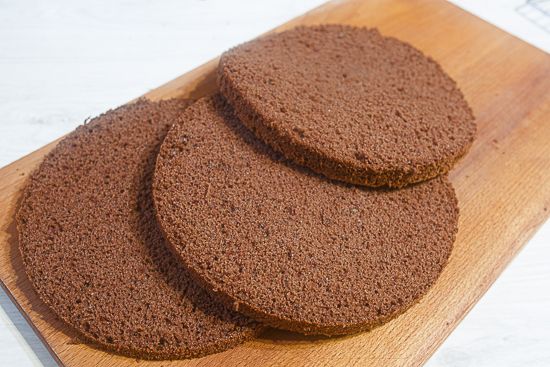
Prepare the frosting.
Soak the gelatin in water. If using powdered gelatin, soak it at a ratio of 1:6 (1 g of gelatin to 6 g of water). There is no need to measure the amount of liquid for sheet gelatin; it will absorb as much as it needs and you can squeeze out the excess.
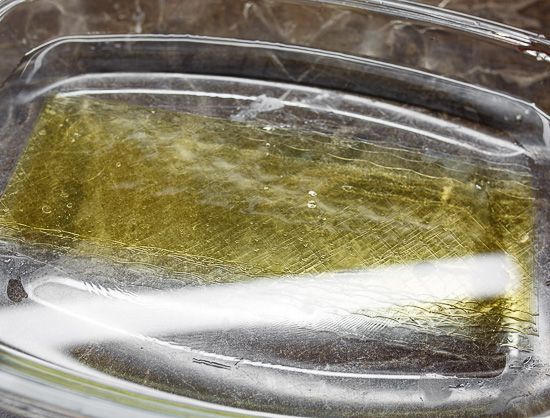
Combine the milk and coffee, and bring to a boil. Remove from heat and let stand for 10 minutes with the lid on.
Strain through a fine sieve.
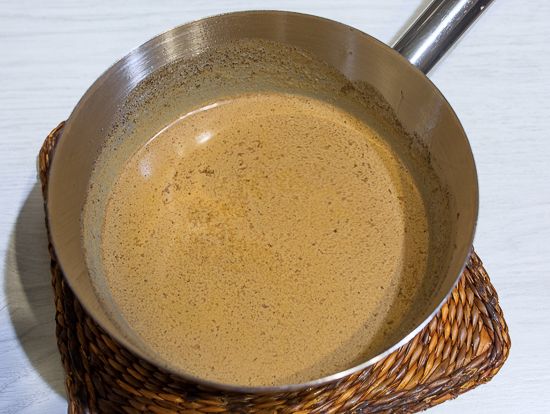
Combine the yolks, sugar, and starch, and whisk until light and fluffy.
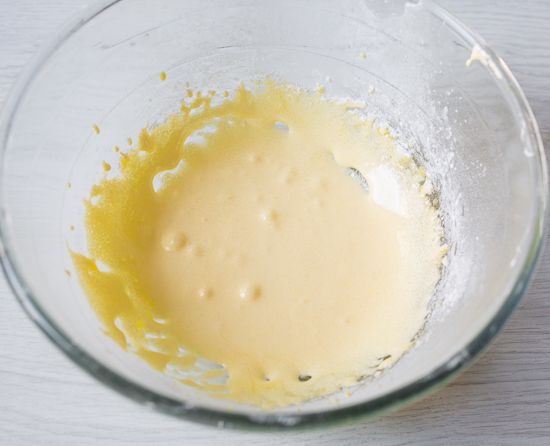
Pour in the coffee milk mixture, stirring constantly. Return the mixture to the saucepan and cook over medium heat until thickened, stirring vigorously with a whisk.
Remove from heat and add the bloomed gelatin, stirring until dissolved. Add the finely chopped chocolate and stir again.
Transfer the pastry cream to a bowl, cover it with plastic wrap, and let it cool completely.
Using a mixer, whip the cooled cream until smooth. Gradually add diced soft butter and beat again until smooth.
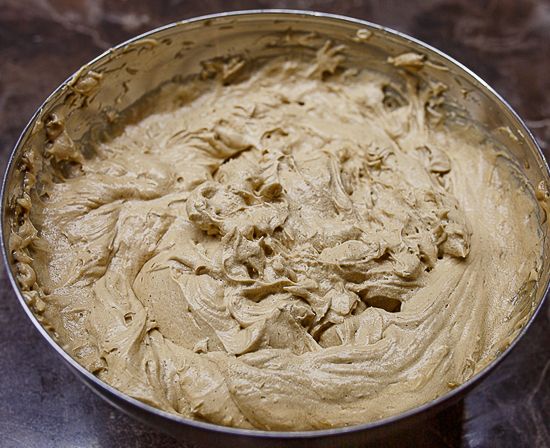
Set aside slightly less than a quarter of the cream for the top and sides of the cake.
To make the syrup, combine water, coffee, and sugar in a saucepan. Bring to a boil, then remove from heat and cover. Let sit for 15-20 minutes. Then, strain the mixture through a fine sieve.
Assemble the cake. It is easiest to do this in a cake ring.
Place the first layer of sponge on the bottom and soak it well with syrup using a brush.
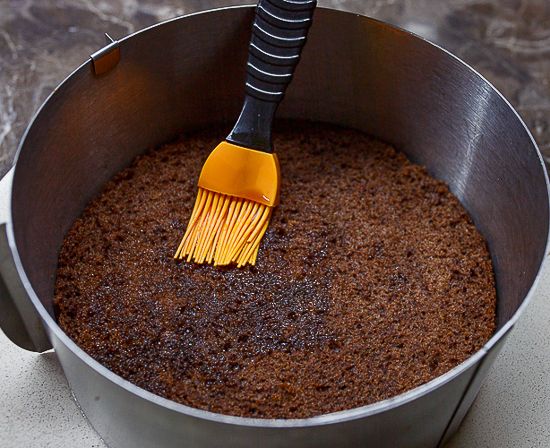
Spread half of the frosting on top and spread it evenly.
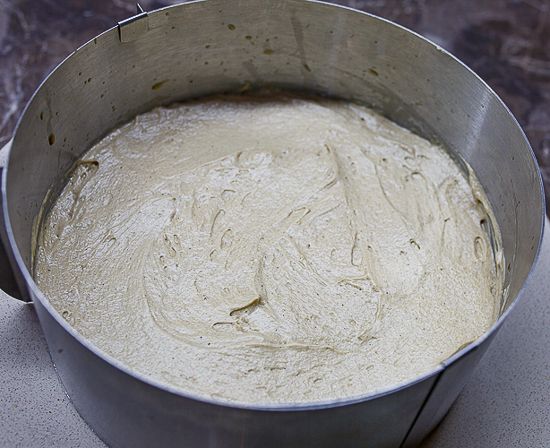
Place the second sponge layer, soak it, and add more frosting. Cover with the third layer and soak it.
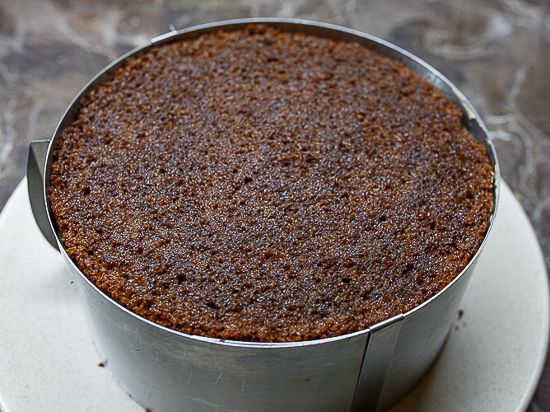
Wrap the cake in plastic wrap and refrigerate overnight, or for at least 5-6 hours, to allow it to set.
The next day, take the cake out of the refrigerator and remove the ring. Finish the sides and top with the reserved cream. Sprinkle cocoa powder through a sieve onto the top.
Slice the cake into pieces and serve.

Enjoy!


